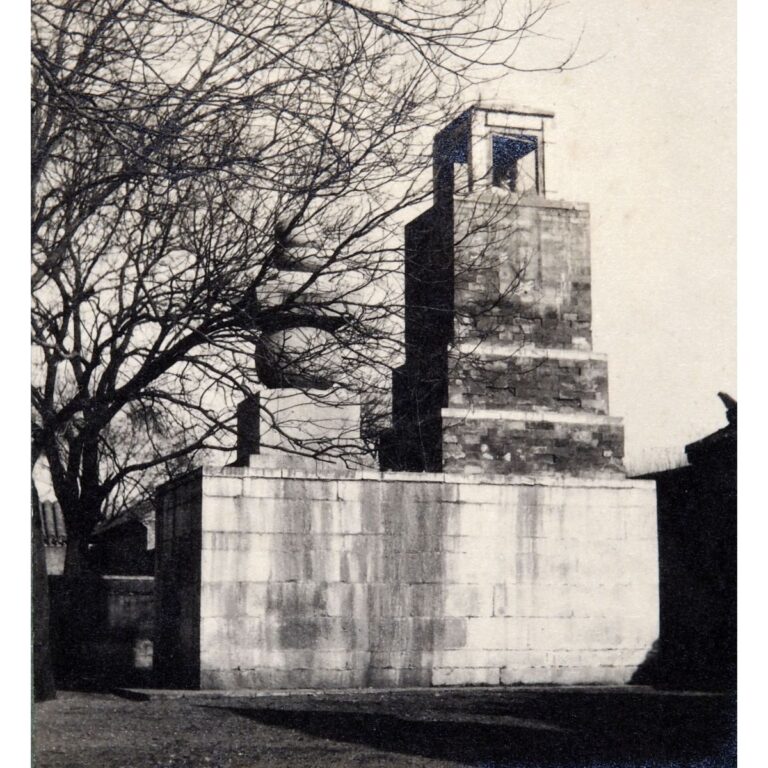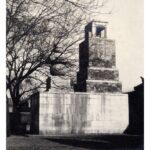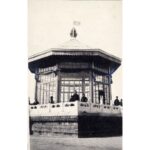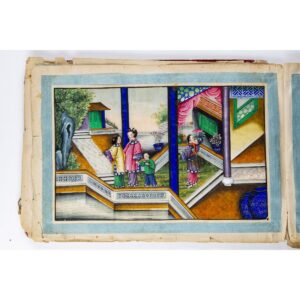Photography Pavilion Zhaohun at the Yonghe Temple
A black-and-white photograph showing a seemingly unusual shrine – the Zhaohun Pavilion (Zhaohunting 招魂亭) or “Pavilion of Spirit Conjuring” at the Yonghe Gong 雍和宫 or “Temple of Tranquility and Harmony” temple complex in Beijing. The small shrine is actually a memorial to Japanese soldiers who died in the Boxer Rebellion (Yihetuan Yundong 義和團運動) in 1900. Its appearance is particularly unusual. Its straight and clean lines are quite different from the rest of the temple’s more decorative aesthetic – traditional Chinese architecture with Buddhist elements.
The geometric shape of the shrine consists of a high platform made of bricks. On it, on the left, is a five-story funerary monument in the form of a Japanese gorintaō 輪 塔. To the right is a taller stepped tower. At the top of the tower is a gilded statue of a seated Buddha in a covered niche. During the first half of the 20th century, Zhaohun Pavilion stood in the southeastern ... more
A black-and-white photograph showing a seemingly unusual shrine – the Zhaohun Pavilion (Zhaohunting 招魂亭) or “Pavilion of Spirit Conjuring” at the Yonghe Gong 雍和宫 or “Temple of Tranquility and Harmony” temple complex in Beijing. The small shrine is actually a memorial to Japanese soldiers who died in the Boxer Rebellion (Yihetuan Yundong 義和團運動) in 1900. Its appearance is particularly unusual. Its straight and clean lines are quite different from the rest of the temple’s more decorative aesthetic – traditional Chinese architecture with Buddhist elements.
The geometric shape of the shrine consists of a high platform made of bricks. On it, on the left, is a five-story funerary monument in the form of a Japanese gorintaō 輪 塔. To the right is a taller stepped tower. At the top of the tower is a gilded statue of a seated Buddha in a covered niche. During the first half of the 20th century, Zhaohun Pavilion stood in the southeastern corner of the fourth courtyard of Yonghe Temple, until the structure was dismantled in the 1950s. Its removal is associated, as was its construction, with the legacy of Japanese imperialism in China in the mid-20th century. There are varying stories about the origin of the gilded statue – some mention Kyoto, others the Forbidden City. The exact date when the shrine was removed is also not clear from the sources. Most probably, it was removed during the renovation of the temple in 1952.
The photograph is the 194th of 449 photographs of Beijing and its surroundings in the album of Ivan Skušek Jr., purchased during his stay in Beijing (1914–1920). In the handwritten inventory of the album, the photograph is referred to as Lama-Kloster: Buddha-Denkmal. (DZ, MV)





































Do you have a comment or additional information about the subject?